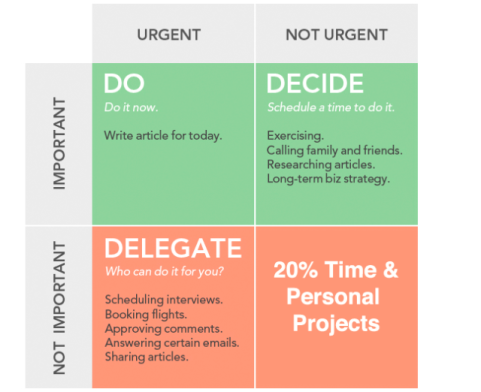The Support Puzzle

By Tony DePrato | Follow Me on LinkedIn
I was recently in a conversation with a large group of people who provide IT Support. Many do not work in education, which is why I like the group. One of the members was recently asked in an interview to rank the following support requests in terms of importance.
1) A teacher has standardized testing starting in 30 minutes however she is unable to access the testing site.
2) The principal (aka your immediate supervisor) can’t open a spreadsheet that she needs to have ready for a presentation later that same day.
3) A teacher is unable to start a lecture because her PowerPoint won’t open. Students are waiting in the classroom.
This scenario truly exemplifies the difference between EdTech and CorpTech. In EdTech the order of importance should be, 1-3-2. In CorpTech it could easily be 1-2-3, or, even 2-1-3. Anyone who has worked with a demanding boss in a Hire-At-Will employment environment would understand why.
In a school, unless the school is on the bad side of accreditation standards, the answer would be 3-2-1.
Here is why.
Teaching and Learning
Most people look at the options and see time and urgency. And although the right answer can be derived from time and urgency, that metric will not always apply. A universal metric is to always focus on Teaching and Learning (TL).
This means that all processes at the school, IT included, need to be on mission and that mission is to support Teaching and Learning. In order to do that, students and teachers come first, and everything else later.
The business of the school is education, education happens within the TL dynamic.
Most school administrators will not even interrupt classes unless there is a real emergency. School administrators will inconvenience themselves to reduce the impact on teachers and students.
In organizations with a head of school or superintendent, those offices may have their own separate support for the technology to further reduce any impact to TL.
The Eisenhower Matrix
I am a big fan of using time management and decision management frameworks. My favorite is The Eisenhower Matrix. I have written about it here if for those who are not familiar with it.

I use the layout above for decision making and project planning. I also use Agile and Scrum when executing the actual pieces of projects. I need these tools to prevent reacting emotionally to problems.
In the scenario above this is how I would categorize each of the three support problems.
DO, Do it Now: 1) A teacher has standardized testing starting in 30 minutes however she is unable to access the testing site.
The reasoning here is that standardized tests have controls that the school must follow. This is a tricky scenario because unless you have implemented IT procedures for standardized testing you would not realize that the pre-testing is completed well in advance. That means the school has already scheduled and guaranteed a test window. The test either has to occur or be canceled and rescheduled. I would write a guide on test implementation, and they vary greatly. For older children, there is a high risk if these test fail.
DECIDE: 3) A teacher is unable to start a lecture because her PowerPoint won’t open. Students are waiting in the classroom.
As a school administrator, I would, of course, ask IT to go help the teacher immediately. In this case, you really need to know the schedule before deciding when to go. If classes are 70-80 minutes every other day, you would want someone in there immediately. If classes are 35-40 minutes daily, you would want to send someone at the end of the class.
The technology has made achieving the lesson goals impossible if the lesson is short. However, the lesson occurs so often that the impact on TL is low. In fact, taking more time in the end when the students are transitioning will allow someone to look at prevention instead of just adding a quick solution that only deals with the symptom.
Most schools have requirements that teachers should be able to run their lessons in the event of an IT failure. This should not happen every day, but it can happen, and teachers are required to work through the issue. If a teacher follows protocol going into the class 5-10 minutes after class has begun, could interrupt their backup plan.
This is why it is a DECIDE. It varies based-on campus and culture.
Delegate: 2) The principal (aka your immediate supervisor) can’t open a spreadsheet that she needs to have ready for a presentation later that same day.
Anyone can do this job as soon as the others are in progress. If there is one IT support person, they will do this last. It is not time-sensitive. Most principals would angry if a teacher or class of students were put in lower priority.
If there is a team, the leader could assign someone to this with a reasonable timeframe.
If you are in EdTech IT Support, make sure you are connected to the culture of your school. Understanding the policies and procedures outside of IT is key to understanding how to support Teaching and Learning.
Source: IT Babble Blog and Podcast
You must be logged in to post a comment.